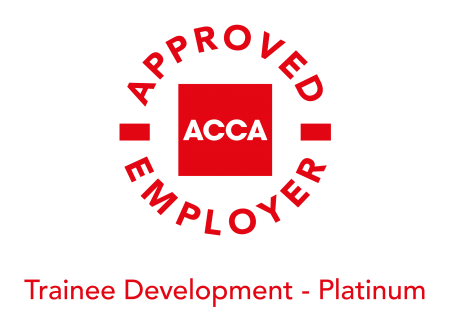Dividend Tax: A Complete Guide
When limited companies make a profit, they can make payments to owners and shareholders in the form of dividends. For business owners in particular, it is vitally important to have a fully informed approach to dividend payments to maximise potential tax advantages.
Perrys Accountants provide expert, professional advice on dividends, and help companies of all sizes to realise the benefits available through dividend tax rates and allowances. This guide explores how dividends are taxed and covers the implications for both businesses and individuals.
What are dividends?
Dividends are a means of making tax efficient payments to owners and shareholders of limited companies. They can be paid when a limited company makes a profit after the deduction of corporation tax and all allowable expenses. They apply to limited companies of all sizes, from small businesses to publicly quoted multinationals, but not to sole traders and partnerships.
Dividends are declared by the directors of a business, based on profit earned over a period of time. It is important to know that directors/shareholders are allowed to earn a salary from their business, as well as taking dividends.
Who can receive a dividend?
Any shareholder or director of a company can potentially receive dividends. The amount received is typically proportional to the number of shares owned, although these can be altered by the introduction of different classes of alphabet shares.
How are dividends taxed?

For the 2024/25 tax year, the dividend tax rates in the UK are based on income tax bands and are as follows:
| Income Tax Band | Dividend tax rate | Income tax rate |
| Basic | 8.75% | 20% |
| Higher rate | 33.75% | 40% |
| Additional rate | 39.35% | 45% |
For a quick guide to how much dividend tax you may need to pay, enter your income in our Dividend Tax Calculator on our Online Calculators page.
What are the tax free allowances?
In the words of HMRC: ‘You only pay tax on any dividend income above the dividend allowance’.
As of 2024/25, the dividend allowance is £500 and is in addition to the standard personal allowance for income tax of £12,570. To take advantage of both allowances, directors often choose to be paid with a low salary combined with dividends.
However, you need to be aware that dividend income can affect your tax position on issues such as child benefits and earnings over £100,000. At Perrys Accountants we can give you detailed advice on your individual circumstances.
For a business owner solely earning a salary of £50,720 and not voting any dividends, the tax payable would be:
| Tax Year 2024/25 | |
|---|---|
| Salary | £50,270 |
| Dividend | N/A |
| Income Tax Allowance | -£12,570 |
| Dividend Tax Allowance | N/A |
| Income Tax payable at 20% on | £7,540 |
| Dividend Tax payable at 7.5% on | N/A |
| Total tax due | £7,540 |
Alternatively, with a salary of £12,570 and a £37,700 dividend, the sums are:
| Tax Year 2024/25 | |
| Salary | £12,570 |
| Dividend | £37,700 |
| Income Tax Allowance | -£12,570 |
| Dividend Tax Allowance | -£500 |
| Income Tax payable at 20% on | £0 |
| Dividend Tax payable at 7.5% on | £37,200 |
| Total tax due | £3,255 |
When making decisions about salaries and dividends, our examples show that there are clear advantages in receiving income through a combination of dividends and salary. The same principle applies for higher rate tax payers, with the same need for careful planning both income streams.
For a clear idea of your tax position, take a look at the Dividend Tax Calculator on our Online Calculators page to explore different scenarios.
Do you pay corporation tax on dividends?
No, dividends are paid from post-tax profits (i.e. after the deduction of corporation tax) to individuals or other companies. Therefore dividends do not affect a company’s corporation tax bill.
Do you pay National Insurance on dividends?
No, National Insurance contributions are not payable on dividends.
Is there a limit to how many dividends I can pay myself?
The amount you can pay yourself in dividends depends on the profits your company generates and your personal tax situation. However, it’s important to ensure that you have enough profits available for distribution and to consider any tax implications, including the dividend tax rates and thresholds mentioned above.
Do I need to file a tax return for dividends?
Yes. When dividends are declared and paid, it is of the utmost importance to keep accurate records of the dates and amounts paid to shareholders, even if there is only one shareholder. Failure to do so could result in a time-consuming investigation by HMRC and penalties. Dividends will have to be recorded on your personal tax return
The timing of dividend declarations also needs careful attention. The amounts paid must coincide with the correct tax year in order to claim any dividend nil rate bands.
As long as a business has sufficient reserves, a dividend can be declared at any time. There is a requirement to issue a tax voucher for each shareholder (even if there is only one), and for the dividend on a certain share class to be shared among the directors and shareholders in proportion to their ownership.
Dividend tax advice from Perrys Accountants
To ensure you are making the best use of low tax rates on dividends, our taxation experts would welcome the opportunity to review your approach. Perrys will be able to provide guidance tailored to your specific circumstances, therefore if you require any assistance do not hesitate to get in touch with your local office.







